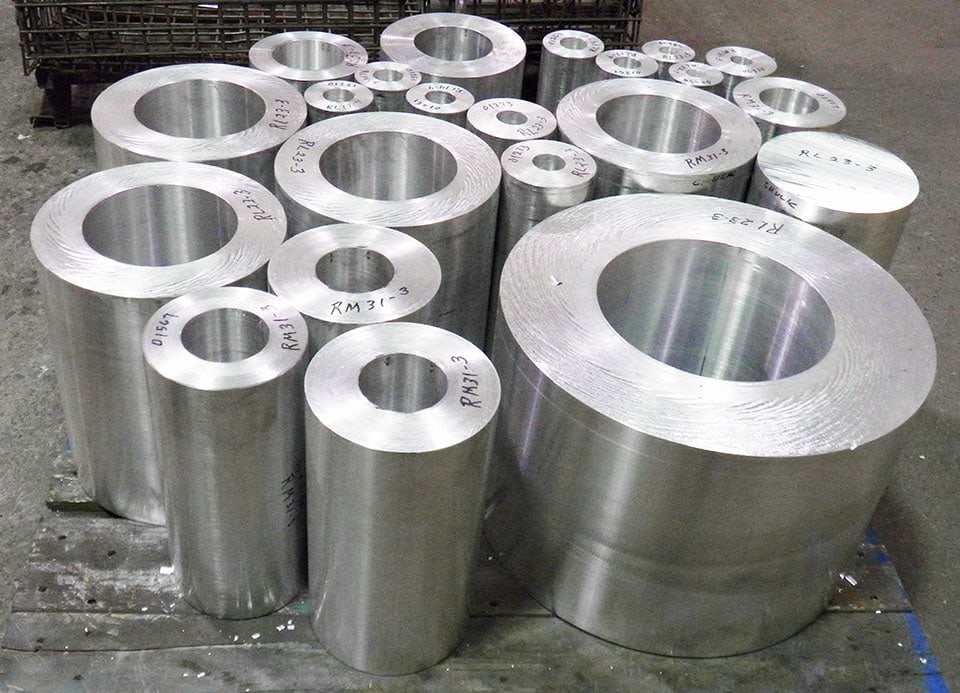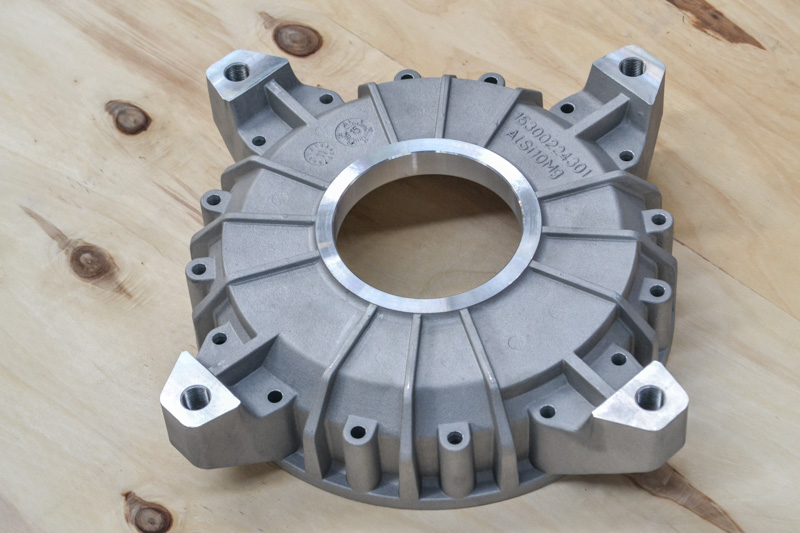Common defects in Aluminum Castings and how to ensure quality
The Relevance of Aluminum Foundry ahead of time Industrial Production Techniques
The Aluminum Foundry plays a crucial function in the advancement of industrial manufacturing strategies. Its lightweight properties and adaptability make Aluminum an optimal selection for various applications. Advanced casting techniques, consisting of die spreading and 3D printing, enable intricate layouts and mass production. As the industry moves in the direction of automation and sustainability, questions occur concerning the future trajectory of Aluminum foundries and their effect on producing performance. What advancements and obstacles exist ahead?
The Role of Aluminum in Modern Manufacturing
Aluminum plays an essential duty in modern-day manufacturing because of its distinct residential or commercial properties and versatility. As a lightweight steel, it notably decreases the general weight of items, boosting fuel performance in transportation and aerospace industries. Its outstanding corrosion resistance guarantees longevity and reliability, making it suitable for numerous applications, from auto parts to building products. Light weight aluminum's pliability enables it to be easily shaped right into intricate layouts, facilitating innovative item growth. Additionally, its conductivity makes it appropriate for electrical applications, adding to advancements in electronic devices and eco-friendly power technologies. The flexibility of Aluminum additionally includes its recyclability, which contributes to lasting production practices. As sectors proceed to prioritize efficiency and ecological duty, Aluminum continues to be a critical product, cultivating advancement and enhancing manufacturing processes throughout several sectors. Its role is not just practical; it is fundamental to the development of modern-day industrial techniques.
Secret Advantages of Aluminum Spreading
The advantages of Aluminum casting are substantial, adding to its appeal in different commercial applications. One essential advantage is the lightweight nature of light weight aluminum, which reduces transport prices and improves fuel efficiency in vehicle and aerospace sectors. Furthermore, light weight aluminum's exceptional rust resistance extends the lifespan of actors parts, making them optimal for exterior and marine environments.
Additionally, Aluminum spreading permits elaborate layouts and complicated geometries, supplying makers with better flexibility in product advancement - Metal Castings. The product also shows excellent thermal and electric conductivity, making it suitable for a series of electronic applications
One more advantage is the fast solidification process, which causes finer microstructures and boosted mechanical residential properties. In addition, Aluminum can be reused consistently without shedding its integral top qualities, advertising sustainability in making techniques. These advantages highlight Aluminum casting's critical function beforehand industrial manufacturing strategies while fulfilling varied design demands.
Ingenious Casting Techniques and Technologies
Numerous innovative casting techniques and technologies have actually arised to improve the efficiency and quality of Aluminum production. Amongst these, die casting stands out as an approach that permits high-volume manufacturing of intricate shapes with outstanding dimensional precision. This method uses high pressure to infuse molten Aluminum into a mold and mildew, leading to smooth surfaces and decreased requirement for machining.
Another remarkable improvement is the usage of 3D printing for molds, which makes it possible for quick prototyping and minimizes lead times substantially. This innovation enables detailed designs that traditional approaches may battle to accomplish.
Additionally, financial investment casting proceeds to advance, using advanced materials and procedures to create accuracy components. The fostering of computer simulations in the casting procedure has better enhanced outcomes by optimizing and anticipating potential defects mold and mildew layouts. Together, these advancements are transforming Aluminum foundries, paving the means for much more effective manufacturing and superior product top quality in various markets.
Ecological Influence and Sustainability in Aluminum Foundries
As industries progressively focus on sustainability, the ecological influence of Aluminum factories has come under scrutiny. These facilities are substantial factors to greenhouse gas emissions and energy usage, largely due to the energy-intensive processes associated with melting and casting aluminum. The extraction of bauxite, the main ore, more exacerbates environmental issues, causing environment devastation and pollution.
In action to these difficulties, many Aluminum shops are embracing extra sustainable practices (Wisconsin Aluminum Foundry). Innovations such as recycling scrap Aluminum greatly decrease power usage and exhausts, as reusing calls for just a fraction of the energy required for primary manufacturing. In addition, the assimilation of eco-friendly power sources, such as solar and wind power, is acquiring grip in factories intending to decrease their carbon impact
Additionally, improvements in technologies that reduce waste and improve resource performance are coming to be crucial for the future of the Aluminum sector. These efforts underscore the change towards a more ecologically responsible and lasting method in Aluminum foundries.
Applications of Aluminum Spreading Across Industries
Aluminum spreading discovers widespread application throughout diverse sectors, owing to its positive properties such as light-weight, deterioration resistance, and exceptional machinability. In the automotive market, producers make use more information of Aluminum castings for engine parts, transmission housings, and architectural parts, boosting fuel performance and performance. The aerospace sector gain from light weight aluminum's strength-to-weight ratio, utilizing it in aircraft frameworks and parts, which contribute to decreased total weight and enhanced gas economic climate.
Moreover, the consumer electronic devices market employs Aluminum spreadings for real estates and chassis, integrating visual appeal with toughness. In building, Aluminum spreadings are used for window frames, doors, and architectural components, providing both performance and style adaptability. In addition, the aquatic industry uses Aluminum casting for boat hulls and installations, making certain resistance to deep sea corrosion. This versatility across different fields highlights Aluminum spreading's important duty in contemporary commercial applications, driving technology and performance.
Obstacles Faced by Aluminum Foundries
Aluminum foundries encounter significant challenges in meeting strict environmental policies while maintaining operational efficiency. In addition, a lack of skilled labor exacerbates these problems, preventing productivity and development. Resolving these issues is important for the sustainability and growth of the Aluminum spreading sector.
Environmental Rules Conformity
Although Aluminum factories play an important duty in industrial production, they frequently face considerable challenges in adhering to environmental regulations. These policies are made to reduce air and water air pollution, waste generation, and energy intake. Factories typically need to buy sophisticated modern technologies to meet rigid discharge criteria and manage unsafe materials efficiently. The prices connected with these upgrades can stress monetary resources, especially for smaller sized procedures. Additionally, the complexity of going across regulatory frameworks can lead to compliance errors, causing costly charges. Continuous changes in policies call for factories to adjust promptly, usually necessitating ongoing training and updates in operational practices. Balancing governing conformity with manufacturing effectiveness remains an important problem for the Aluminum Foundry market.
Knowledgeable Labor Scarcity
As the Aluminum Foundry sector proceeds to advance, a pushing difficulty has actually arised: a skilled labor shortage that intimidates the field's performance and development. This lack is mostly fueled by an aging workforce and the lack of interest amongst these details more youthful generations in going after professions in manufacturing. Lots of experienced jobs require customized training and experience, which are significantly difficult to discover. Consequently, Aluminum foundries struggle to keep functional effectiveness, leading to hold-ups and boosted production costs. Initiatives to draw in new ability with apprenticeship programs and collaborations with academic institutions are underway, yet these campaigns take some time to yield outcomes. Without a robust increase of knowledgeable employees, the Aluminum Foundry market might deal with significant difficulties in meeting the needs of modern commercial production.
Future Fads in Aluminum Foundry Production Techniques
The future of Aluminum Foundry manufacturing techniques is positioned to be considerably formed by advancements in automation and lasting material developments. Automation is anticipated to enhance effectiveness and accuracy in Foundry processes, decreasing labor prices and reducing human error (Aluminum Castings). At the same time, an expanding emphasis on sustainability will certainly drive the development of green materials and methods, straightening the industry with worldwide ecological goals
Automation in Foundry Processes

Sustainable Product Innovations
While the Aluminum Foundry market embraces automation, an identical emphasis on sustainable product advancements is reshaping manufacturing techniques for the future. Innovations in recycling procedures are enabling shops to use post-consumer aluminum, considerably reducing energy consumption and waste. The growth of environmentally friendly ingredients and coverings is decreasing the environmental effect linked with traditional products. Advancements in light-weight Aluminum alloys are enhancing efficiency while promoting sustainability, making products not just a lot more reliable but likewise less complicated to recycle at the end of their life process. As the sector adapts to stricter environmental guidelines, these lasting practices are ending up being essential. Eventually, the dedication to lasting product innovations in Aluminum foundries will certainly drive improved efficiency while resolving global environmental difficulties.
Often Asked Inquiries
Just How Does Aluminum Contrast to Various Other Metals in Casting?
Aluminum uses benefits over various other steels in spreading, consisting of reduced melting factors, outstanding fluidness, and resistance to deterioration. These residential properties make it possible for detailed layouts and faster manufacturing, making Aluminum a recommended selection for many markets.
What Precaution Are in Location in Aluminum Foundries?
Precaution in Aluminum foundries include protective gear for workers, proper ventilation systems, normal tools upkeep, fire avoidance protocols, and strict adherence to safety regulations, ensuring a secure environment while decreasing the threat of mishaps click for more and injuries.
Just How Are Aluminum Alloys Selected for Certain Applications?
Aluminum alloys are selected based upon mechanical properties, deterioration resistance, and thermal conductivity. Designers assess application demands, considering aspects like weight, toughness, and environmental conditions, making certain ideal efficiency for details commercial or industrial uses.
What Is the Ordinary Life Expectancy of Aluminum Cast Products?
The average life-span of Aluminum cast items commonly varies from 20 to 50 years, depending on ecological variables, use conditions, and upkeep practices. Proper treatment can considerably extend their practical longevity and performance effectiveness.

Exist Accreditations for Aluminum Foundry Processes?
Yes, there are accreditations for Aluminum Foundry processes, including ISO 9001 for quality monitoring systems and certain market criteria like ASTM and SAE, which guarantee adherence to high quality and safety in Aluminum production and casting.
Aluminum shops play a necessary role in industrial manufacturing, they usually face considerable obstacles in abiding with environmental laws. Aluminum foundries struggle to preserve functional effectiveness, leading to hold-ups and raised production costs. The future of Aluminum Foundry manufacturing techniques is poised to be significantly formed by improvements in automation and lasting material innovations. Increasingly, automation is shaping the landscape of Aluminum Foundry production techniques, driving effectiveness and precision. While the Aluminum Foundry sector embraces automation, a parallel emphasis on lasting product technologies is improving manufacturing strategies for the future.